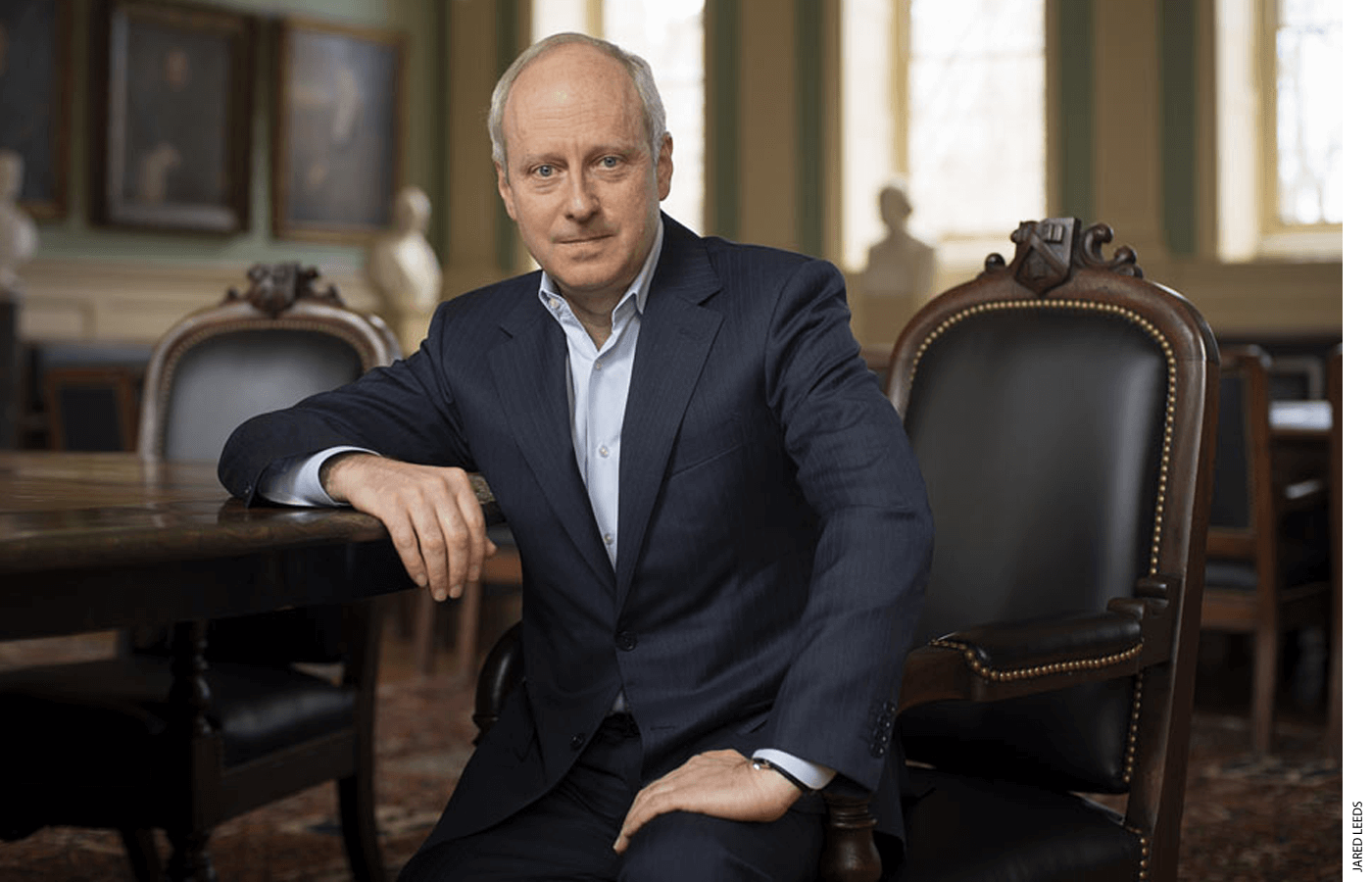
The Tyranny of Merit: What’s Become of the Common Good?
by Michael J. Sandel
Farrar, Straus and Giroux, 2020, $28; 288 pages
The Aristocracy of Talent: How Meritocracy Made the Modern World
By Adrian Wooldridge
Simon & Schuster, 2021, $24.99; 504 pages
As reviewed by Jay P. Greene
Michael Sandel’s The Tyranny of Merit and Adrian Wooldridge’s The Aristocracy of Talent both address the widespread support for meritocracy that characterizes modern America. Wooldridge acknowledges the challenges raised by meritocracy but sees the concept as a central force in improving human well-being. Sandel, as his book title suggests, has a much less favorable view of meritocracy.
Their disagreement does not appear to be based on a different understanding of the facts or even a dramatically different application of values to those facts. Instead, the main difference between the perspectives of these two authors lies in the standards they use to compare policy prescriptions to possible alternatives. Wooldridge argues that meritocracy, despite its flaws, is better than any alternative arrangements people have tried, while Sandel prefers to compare meritocracy to an ideal system rather than to actual historical alternatives.
Wooldridge defines meritocracy as the belief “that an individual’s position in society should depend on his or her combination of ability and effort.” Wooldridge notes that meritocracy was an alien concept for the bulk of recorded human history. Instead, men and women were largely born into their station and were expected to abide by its restrictions and responsibilities without complaint. There was a natural and fixed hierarchy, often believed to be divinely ordained. Deviation from it was considered unnatural and blasphemous. Positions of power were allocated largely by birth. The rationing of positions within one’s station was largely determined by nepotism, patronage, or bribery rather than by accomplishment or ability.
There were pockets of meritocracy in the past, according to Wooldridge, in both imagination and actuality. In Plato’s Republic, Socrates imagines a meritocracy ruled by philosopher kings. China’s mandarin elite were selected by the merit of their performance on examinations to run the empire’s bureaucracy. Also, in Wooldridge’s account, Jews historically established their own meritocracy of intellectual accomplishment in societies where they were denied access to status by birth. And the European Church and Italian city-states created enclaves of merit-based advancement. But these deviations from restrictive hierarchies were limited in time or place.
The lack of meritocracy produced suffering, according to Wooldridge’s history. Effort and ability often went unrewarded, resulting in less of both. Society was characterized by corruption, waste, and oppression. People were generally unable to develop their individual dreams and could rarely hope to realize those ambitions through their own skill or hard work. This left people poorer and less fulfilled. Life may not have always been nasty, brutish, and short, but it was pretty close.
The shift toward meritocracy began with the Enlightenment in 18th-century Europe, Wooldridge notes, writing that “removing group-specific legal rights and replacing them with individual rights was at the heart of the Enlightenment project.” According to him, this change in perspective spawned “the four great revolutions that created the modern world. The French Revolution was dedicated to the principle of a ‘career open to talents.’ The American Revolution advanced the idea that people should be allowed to pursue life, liberty, and happiness without being held back by feudal restrictions. The Industrial Revolution unleashed animal spirits. The liberal revolution . . . introduced open competition into the heart of government administrations and educational systems.” These revolutions transformed how people thought about themselves and society worldwide, producing unprecedented prosperity and freedom.

So, what’s not to like? Sandel, for his part, devotes virtually no attention to world history before the ascendancy of meritocracy, so he does not make comparisons between meritocracy and what preceded it. Instead, he focuses on describing two main shortcomings of meritocracy today. The first is that much of what people think of as merit is actually luck. As Sandel puts it, “my having this or that talent is not my doing but a matter of good luck, and I do not merit or deserve the benefits (or burdens) that derive from luck.” As an example, he acknowledges that Lebron James is very talented and has to devote significant effort to developing and maintaining his skills—but notes that it is largely luck that James was born in a particular time and place that recognized and rewarded those skills. Similarly, someone with an aptitude for computer programming or playing violin should recognize the good fortune of being born in a time and place where those skills and the effort required to develop them would be recognized and rewarded.
Sandel is further concerned that people born with wealth and advantage are in a better position to identify and cultivate skills sought by the market, converting the luck of their birth into what people might describe as merit. He notes the higher probability of their gaining access to elite educational institutions, and the limited ability of other people to move from poverty to prosperity, as evidence of this calcified hierarchy masquerading as meritocracy.
Rather than seeing this flaw in meritocracy as a problem that should be remedied by expanding opportunities for the disadvantaged, Sandel offers his second argument—one that rejects the ideal of meritocracy altogether. The problem, according to Sandel, is not that we have imperfectly sorted people by merit, but that accurately sorting people by merit would be even worse: “Even if a meritocracy were fair, it would not be a good society,” Sandel writes. “It would generate hubris and anxiety among the winners and humiliation and resentment among the losers—attitudes at odds with human flourishing and corrosive of the common good.”
The real danger of meritocracy, according to Sandel, is not that we are failing to achieve it, but that its successful implementation would affirm the notion that those with greater merit are superior to those with less, harming both. Sandel says we would be better off in an aristocracy: “If you were born into the upper reaches of an aristocracy, you would be aware that your privilege was your good fortune, not your own doing. Whereas if you ascended, through effort and talent, to the apex of a meritocracy, you could take pride in the fact that your success was earned rather than inherited.”
This is where Sandel’s argument goes off the rails. It is shockingly ahistorical to assert that those born in aristocracies would recognize the good fortune of their birth and be any less arrogant than those who succeed in meritocracies. Wooldridge confirms this point when he quotes Markgraf Karl Friedrich von Baden as observing, “If there are races among animals, there are races among men. For that reason, the most superior must put themselves ahead of others, marry among themselves, and produce a pure race: that is the nobility.” Wooldridge also quotes Walter Raleigh: “For that infinite wisdom of God, which hath distinguished his angels by degrees, which hath given greater and less light and beauty to heavenly bodies . . . hath also ordained kings, dukes, or leaders of the people, magistrates, judges, and other degrees among men.” It seems that the hubris of the successful does not require meritocracy to give it license.
Sandel is not actually pining for a return to aristocracy. He is simply arguing that meritocracy is even worse. So what alternatives does he suggest? Sandel does offer some policy prescriptions in the final chapters of his book, but they are underwhelming, given the ferocity of his critique. He suggests, for instance, that elite universities should establish minimum qualifications for admission and then randomly accept students above that threshold. That way, students would at least be reminded of how luck played a role in their success.
If Sandel really believes that much of what we consider merit is luck and that even a true meritocracy would be undesirable because it would lead to hubris and humiliation, then randomly accepting candidates from the top 5 percent to form the elite 1 percent would hardly address that problem. Those at the helm of academia draw fine distinctions about merit in many areas other than admissions. They award grades to students. They hire and grant tenure to faculty. They determine which research should be published in leading journals. Wooldridge, who is an editor at The Economist, is clearly poking fun at Sandel, who is the Anne T. and Robert M. Bass Professor of Government at Harvard, for offering such a limited solution to grand concerns when Wooldridge suggests that “perhaps we should also distribute named chairs and tenured professorships on the basis of a lottery of the qualified.”
Sandel’s other policy prescription is to renew “the dignity of work” by replacing “some or all of the payroll tax with a financial transactions tax—a ‘sin tax,’ in effect, on casino-like speculation that does not help the real economy.” Changing tax rates or tinkering with trade policy seems like weak tea in the face of claims that almost all success is the result of luck and, to the extent that it is not, differences in success demean the winners and losers.

Wooldridge acknowledges the concerns Sandel raises, as do all of the other foils that Sandel discusses in his book, including academics like libertarian economists Friedrich Hayek and Frank Knight, and political philosopher John Rawls, as well as elected officials like Donald Trump, Bill Clinton, and Barack Obama. While Sandel attributes much more to luck than these individuals do, everyone he discusses recognizes that success is produced by some mixture of talent, effort, and luck. And almost everyone recognizes the dangers of hubris and humiliation that inequality can foster.
Traditional value systems and religion remind us of the extent of luck in our lives and prompt us to maintain gratitude and humility through such sayings as “there but for the grace of God go I.” But Sandel sees religion as having the opposite role. “The allure of the meritocratic world [is] that the world is arranged in a way that aligns what we receive with what we are due,” he writes. “This is the hope that has fueled providentialist thinking from the Old Testament to present-day talk of being ‘on the right side of history.’” Sandel also interprets the Book of Job as teaching that Job “must have committed some egregious sin. . . . This is an early example of the tyranny of merit.” Suffice it to say that this is a highly unconventional interpretation of the Book of Job, which is normally thought to teach that people do not get what they deserve in this world and that God’s divine justice is beyond our ability to comprehend.
No one’s solutions to the challenges of meritocracy, from those in the Bible to those of Hayek and Rawls, are fully satisfying. But, as Wooldridge notes, “meritocracy succeeds because it does a better job than the alternatives.” He offers that conclusion after presenting an exhaustive history of how meritocracy transformed the world for the better. Sandel suggests that our existence is governed by luck but wants to maintain dignity and mutual respect in the face of randomness by holding lotteries for admission to Harvard and taxing hedge-fund managers. He discusses no time or place in the world in which that dignity and mutual respect were achieved in the absence of meritocracy.
This debate about the merits of meritocracy has significant implications for the education-reform movement, which is generally based on the unexamined belief that expanding access to educational opportunities to remedy defects in our meritocracy should be a primary goal. Sandel provides a warning that there could be a dark side to more efficiently sorting those with high potential from those with less in an effort to offer more opportunities to the disadvantaged. If we were persuaded by his argument, we would be more open to proposals to eliminate accelerated courses and AP, abandon test-based admissions for elite public schools such as Stuyvesant or Thomas Jefferson, and diminish or eliminate the use of college-entrance exams.
Before taking such leaps, we might want to look at Wooldridge’s account of what happens in the absence of meritocracy. He notes that the City University of New York was once an engine of opportunity for immigrant children to move into the halls of wealth and power, until it opted for an open-admission policy. The collapse in the quality and success of CUNY’s graduates after the university eliminated meritocratic admissions might give us pause. Wooldridge’s telling of how positions of wealth and power were allocated before the advent of meritocracy should make us more concerned. The pre-meritocracy sorting system—with its nepotism, corruption, and bribery—did not produce greater equality. It merely strengthened the ability of the advantaged to maintain their privileges. Access to elite high schools, colleges, and jobs were much more determined by one’s birth than is the case in our currently imperfect meritocracy. And those who expanded their wealth and power in this way were plagued by at least as much hubris, and the disadvantaged by at least as much humiliation, as the winners and losers of today.
Meritocracy may mistake luck for skill and effort and may facilitate a form of hubris, but we can hold these defects in check to some extent by reinforcing norms of gratitude and humility. If there is a tyranny of meritocracy, it appears less tyrannical than the alternatives.
Jay P. Greene is a senior research fellow at the Heritage Foundation.
Sign up for the Education Next Weekly to receive stories like this one in your inbox.
The post The Merits of Meritocracy appeared first on Education Next.
[NDN/ccn/comedia Links]
News…. browse around here
